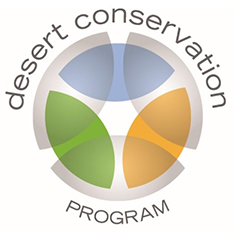
About the DCP
About the DCP
Background
Under Section 10 of the Endangered Species Act, the U.S. Fish and Wildlife Service (USFWS) has issued Clark County an incidental take permit for the Desert Tortoise and 77 other species. The incidental take permit requires that mitigation fees be paid prior to grading (or really any land disturbance).
All projects, including those by a local government or quasi-municipal entities are required to pay the mitigation fees per code. If an entity were to proceed with grading prior to paying mitigation fees, their action would not be covered by our incidental take permit and it would be in violation of the Endangered Species Act. When entities pay their mitigations fees they are covered under the Clark County incidental take permit.
Why is the disturbance fee collected?
This permit allows for the incidental take of covered species and their habitat after the developer has paid the mitigation fee and secured all other permits necessary for development. The incidental take permit authorizes up to 145,000 acres of disturbance in Clark County. Payment of the disturbance fee allows private land developers to participate in a streamlined permitting process and precludes the need for developers to conduct individual project-by-project consultations with the USFWS to comply with the Endangered Species Act.
What is incidental take?
Take, as defined under Section 3 of the Endangered Species Act, means to harass, harm, pursue, hunt, shoot, wound, kill, trap, capture or collect, or attempt to engage in any such conduct. Incidental take is take which occurs in the process of performing otherwise lawful activities and which is not the purpose of that activity. An example would be the unintentional crushing of a desert tortoise by heavy equipment on a project for which the developer has secured all the necessary permits to proceed with development.
What else is required to comply with the incidental take permit?
All developers and construction personnel are required to report desert tortoises on non-federal construction sites to the Wild Desert Tortoise Assistance Line.
If you see a Desert Tortoise on your construction site you should collect the Desert Tortoise and place it in a clean box with a ventilated lid. To prevent death by overheating, immediately take it to a cool, shaded place. Call the Wild Desert Tortoise Assistance Line at 702-593-9027. All calls will be answered within 24 hours. Someone will be scheduled to pick up the tortoise from the construction site free of charge and find a suitable site for relocation.
Under no circumstances may the tortoise be taken for private use. It is illegal to remove wild Desert Tortoises for private use. Please do not handle or otherwise disturb wild Tortoises unless they are in harm’s way on a private land construction site.
Developers and construction personnel on federal construction sites should not handle Desert Tortoises and are advised to follow the rules outlined in the project-specific incidental take permit.
What is the disturbance fee used for?
The Desert Conservation Program receives the $550 per acre disturbance fees (also known as section 10 fees) and uses those funds to implement the Multiple Species Habitat Conservation Plan (MSHCP). Implementation of the MSHCP provides for mitigation and conservation of 78 plant and animal species, including the Desert Tortoise. Please visit our current project and closed projects pages for a list of mitigation and conservation projects funded by the disturbance fee.

The DCP implements actions to ensure survivability of covered species in the wild.
Construction Site Training and Dust Certification Classes
The DCP offers desert tortoise construction site training free of charge.
To request a training session, please contact Audrie Locke at 702-455-2705, or email her at Audrie.Locke@ClarkCountyNV.gov.

